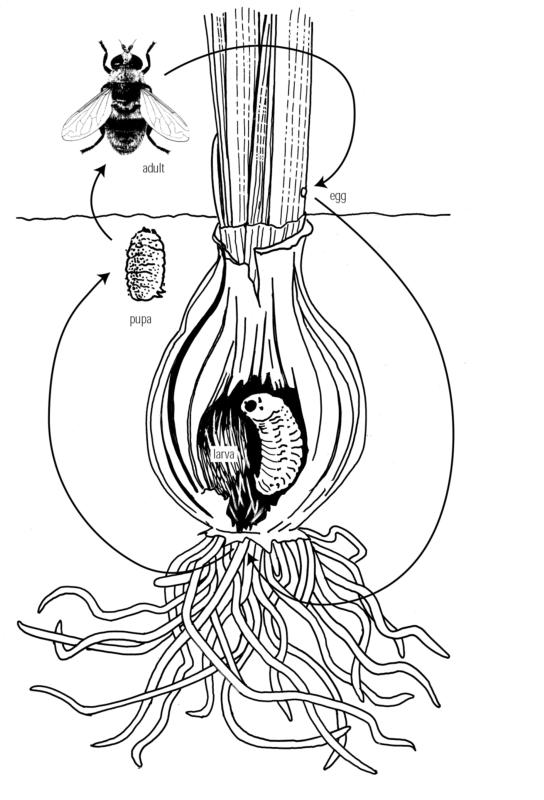Identification
Adult bulb flies are stocky, hairy flies, blackish to dark green with pale yellow, orange, or gray markings. Adult bulb flies look like small bumble bees and may also resemble other beneficial species. On warm sunny days, adults often hover around blooming plants, where they feed on pollen and nectar. Bulb fly larvae are plump, wrinkled, dirty yellow, gray, white, or brownish maggots with a short brown or blackish breathing tube at their rear. Maggots of several species of flies infest bulbs of all types, including daffodil, iris, lily, and tulip.
Life Cycle
The adult lays an egg in spring or summer on exposed bulbs or stems at or near the base of plants. After 5 to 14 days, the egg hatches and a larva wriggles down into the soil or moves down along the outside of the bulb. It feeds on the bottom of the bulb where the roots emerge then enters and feeds inside the bulb. The larva develops through three instars over a period of 9 to 10 months. In spring the larva pupates in a brownish case inside the bulb, or it emerges and pupates nearby in topsoil. Pupation takes 4 to 8 weeks, after which the adult emerges, mates, and females lay eggs. Adults live about 2 to 3 weeks.

Damage
Larvae feed in bulbs, causing yellow foliage and stunted plants. If infested, large bulbs produce fewer leaves and distorted growth. Instead of a large shoot, small leaves may emerge in a ring around the central growing point that has been killed by a larva. Blooms and small bulbs often die. Narcissus bulb fly attacks healthy plants; lesser bulb flies prefer bulbs and rootstocks that are already diseased or decayed.
Solutions
Prevention is the most effective bulb fly control strategy. Purchase and plant only pest-free bulbs. Handle bulbs carefully to avoid injury. Remove and destroy infested bulbs and plants as soon as you find them.
